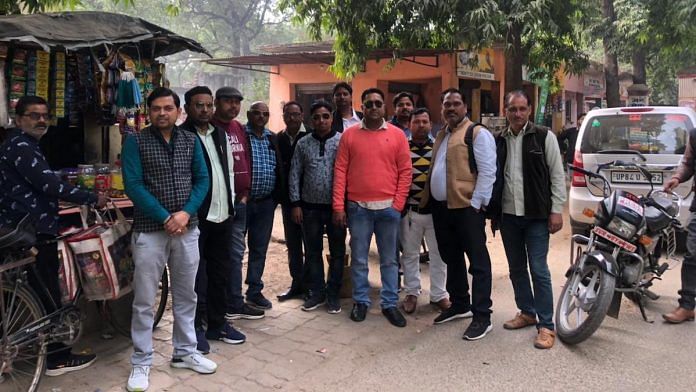Ayodhya/Prayagraj/Mainpuri: ‘Shaukiya’, ‘tashan’, and ‘lagaav’ are some of the first words that come to the mind of stringers in Uttar Pradesh when asked about what drives them as journalists. With side businesses such as small-scale private schools, agriculture, internet cafes, marriage halls, YouTube channels and kirana stores to run their households, stringers in Ayodhya, Mainpuri, Prayagraj, Varanasi, Meerut and Saharanpur are constantly on the job – collecting footage and raw news from the ground for regional and national media houses.
The recent death of Raman Kashyap in Lakhimpur Kheri violence shed light on the lives of small-town stringers, the exploitative system they work in with no institutional support, no benefits, low pay, and irregular work hours. Often, they don’t even get a byline for the stories they break. And yet most of them are proud of the job they do – writing ‘Patrakaar’ on their Hero Honda bikes with great pizzazz.
The Golden Period for stringers began with the explosion of 24×7 TV news. It coincided with the rise of small-town India, as marketers, advertisers and Bollywood scriptwriters turned their gaze away from the saturated big metropolis. The saga of a little boy named Prince who fell into a borewell in Haryana’s Kurukshetra in 2005 spawned the appetite for small-towns-are-changing stories. And stringers rode this wave.
ThePrint travelled across several towns in Uttar Pradesh, a state gearing up for 2022 assembly elections and media spotlight, to highlight the lives of rural stringers, who are often called the “foot soldiers” of Indian journalism.
Also read: Where Lakhimpur was a challenge to report, ground stories help to break ‘us’ vs ‘them’ binary
‘Accidental journalists’
At collectorates, hospitals, education departments and political events in any district, one often spots newspaper and TV reporters (mostly men) with their bikes and cars. While these established reporters get bylines and recognition, the stringers accompanying them often go unnoticed.
“Zyadatar stringer aise hi seekhte hain, pehle kai saal tak reporters ke sath ghoomte hain, fir khud field par akele utar aate hain (This is how most stingers start. Initially, they accompany established reporters and then start covering stories alone),” says 32-year-old Pawan Patel, a stringer in Prayagraj, who stepped into journalism eight years ago.
Usually, beats such as Nagar Palika, crime, hospitals, politics and education are assigned to established reporters in a district. The stringers focus on social stories and people, says Patel. A graduate from Poorvanchal University, he now works for digital platforms such as Public App, Global Bharat, News National and Vatan App, after trying for many years to get into mainstream media houses. A senior journalist introduced him to this field.
“Stringer ka matlab hai ki bike uthao, jahan naali, pani, ghar, sadak ki samasya hai, usse story bana do (Stringer means to get on your bike, and go to wherever there is an issue with drains, water, homes, roads. That’s a story),” Patel tells ThePrint, sitting in an Indian Coffee House in Prayagraj on a cold November day.
He does not have a journalism degree. Neither does 47-year-old Shanker Sriwastava from Ayodhya, who could only study till Class 8.
“Accidental journalist kehe lijiye. Most stringers don’t have degrees, they learn journalism by practice,” says Abhishek Sawant from Ayodhya, who has a degree and worked for Punjab Kesari for five years. He is now a freelancer.
Sriwastava, too, learnt journalism from two senior newspaper reporters in 2007. He clicked photographs for them, and slowly picked up the skills of reporting.
Both Sawant and Sriwastava congregate at a local media office run by reporter Sanjeev Azad and a few others. Located on the first floor of a shop in the overcrowded Rikabganj Chowk market in Ayodhya, the media house is the go-to place for stringers like Sriwastava, who are neither registered at any press association nor are salaried employees of any media house.
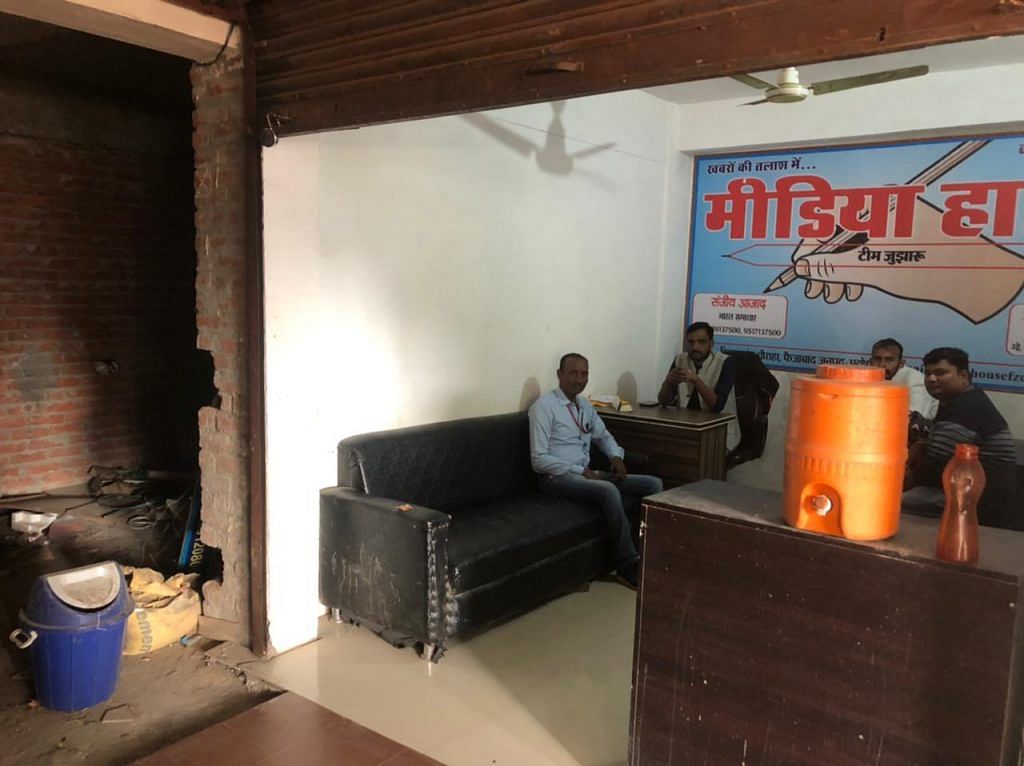
The media centre has a banner: “Khabhron ki talash mein, kalam ke sipahi”. Soldiers of the pen. The group of journalists identifies themselves as “Team Jujharu”, which means fighters.
Sanjeev Azad, who started as a stringer, is now a reporter with an influential regional media house, Bharat Samachar. He says most of them don’t become reporters even after trying for 7-8 years. Then they turn to other businesses for a steady income.
There’s also resentment against press associations for ignoring stringers.
“They may raise a voice whenever an incident like Lakhimpuri happens, but they don’t raise issues that have severely affected stringers for years. This would challenge their status quo. For example, they don’t raise the issue of registration of all stringers,” Patel says.
Also read: Counting burning, buried, floating bodies: How Dainik Bhaskar led national coverage on Covid
Who gets to become a reporter
Pawan Patel, who is an OBC, strongly believes that it is his caste that keeps away opportunities.
“If you ask me, I can recount dozens of incidents when an upper-caste person had the upper hand in getting the opportunity due to his inherent social, cultural and economic capital,” he says.
This sentiment is echoed by his colleagues in Mainpuri.
Anil Shakya, who has been in the profession for the last 24 years, is still a stringer. “One can’t deny the casteism,” he says and narrates the story of when a Brahmin leader from the district invited only Brahmin reporters for a meet-and-greet.
Connections in this small world are all too important. And connections are easier to make if you have social and economic privilege.
“Reporter banne ke liye aapke media mein link hone chahiye, press clubs ke logon mein uth baith aur state heads ko convince karne ke liye ads honi chahiye. (To become a reporter, one needs to have media links, know press club members, and ads to convince the state heads of channels),” Shakya says. But, Patel points out, if you are a learner, and you don’t have upper-caste privileges, it’s hard to survive.
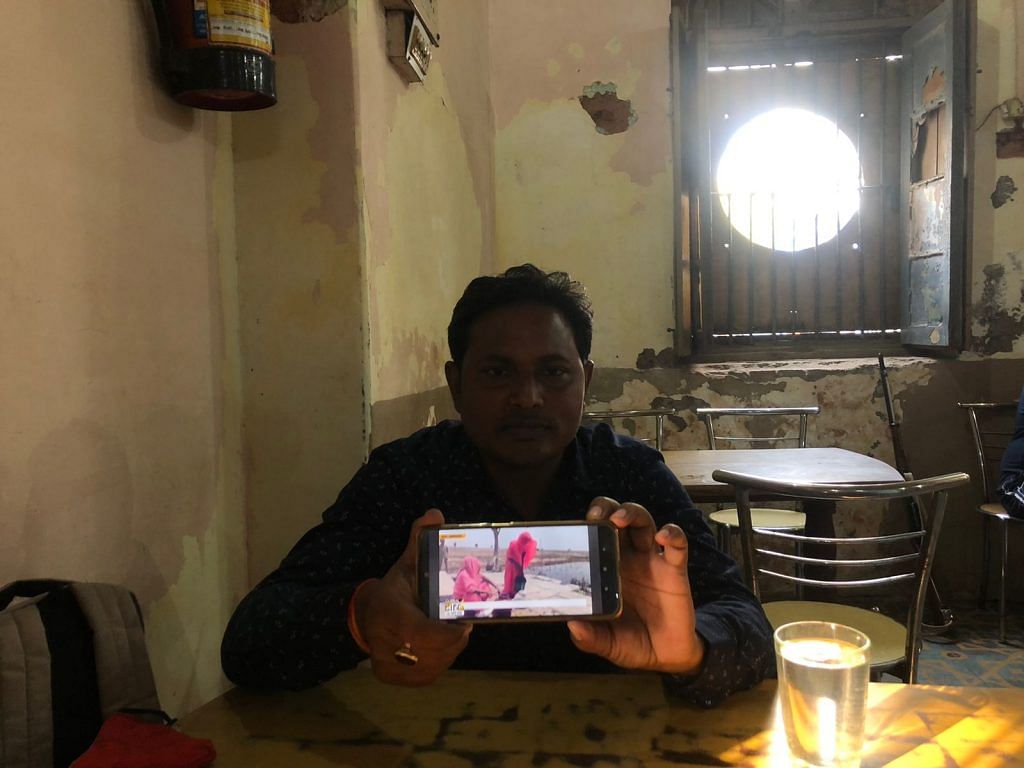
Pramod Jha from Mainpuri, who is an ex-Navy man, disagrees: “Unless there is a study, one can’t establish this.”
Stringers are divided over caste identity, but the question of female participation is largely ignored. It’s a boys’ club. In districts like Prayagraj, Ayodhya and Meerut, the male journalists could only name one or two female stringers. Mostly, women reporters from state capitals and Delhi travel for special stories.
Narendra Pratap, a reporter with Bharat Samachar, explains that men have an advantage because this field requires a lot of “bhag daud (running about)”.
“If you ask me for a male stringer, I will have 15 names on my fingertips in any district, but I will have to think hard if you ask me about a female stringer,” Pratap says.
Also read: News hunters or ad-getters? The insecure world of rural stringers in media
Survival of the risk-taking
Stringers have broken some of the biggest stories in India in recent years. Many national stories on crime against women in UP were first reported by stringers. In her book The Good Girls: An Ordinary Killing, Sonia Faleiro writes about how the dead bodies of the two girls in the 2014 Badaun gangrape incident were spotted by a local stringer, and then the input was sent to a national TV channel. Narendra Pratap was a stringer with ETV in 2016 when he broke the story of the Bulandshahr gang rape of a mother-daughter duo on a highway. The story became a national issue and was covered by every media house. This has been the pattern in the 2020 Hathras rape and murder case too. Before it hit the headlines nationally, local stringers were in on the story since day one.
But pay and credit still elude risk-taking stringers.
“Hum to bas duad lete hain, jab tak himmat hai, karte rahenge (Till we have courage, we will hustle),” Shanker Sriwastava says.
Afaq Ali Khan, who has a master’s degree in Sociology from Chitrakoot University, barely gets Rs 300-400 for a video story and the payment is not regular.
“We get paid maybe in six months or a year,” he tells ThePrint as he leads a pack of 15 stringers at the tapri outside the collectorate in Mainpuri. “But we spend a lot of money on getting I-cards from digital platforms, mikes and letters.”
It’s turning out to be a lucrative business for many waiting to mislead these journalists.
Patel, along with two other stringers, went to meet the editor of a channel in 2018. He promised them letterheads, IDs and mikes with logos in exchange for Rs 30,000. They only got the letterhead.
The other way of hiring stringers is by seeing who can bring ads to the media house.
“If you can bring advertisements on Holi, Diwali and Republic Day, etc, from MLAs or MPs, then you can get the post of a stinger or a reporter,” Afaq Ali Khan explains.
He would bring ads worth Rs 20-30,000 from colleges and MLAs for media houses before Covid hit the nation. Now, he says, no one wants to pay more than Rs 5,000 for an advertisement.
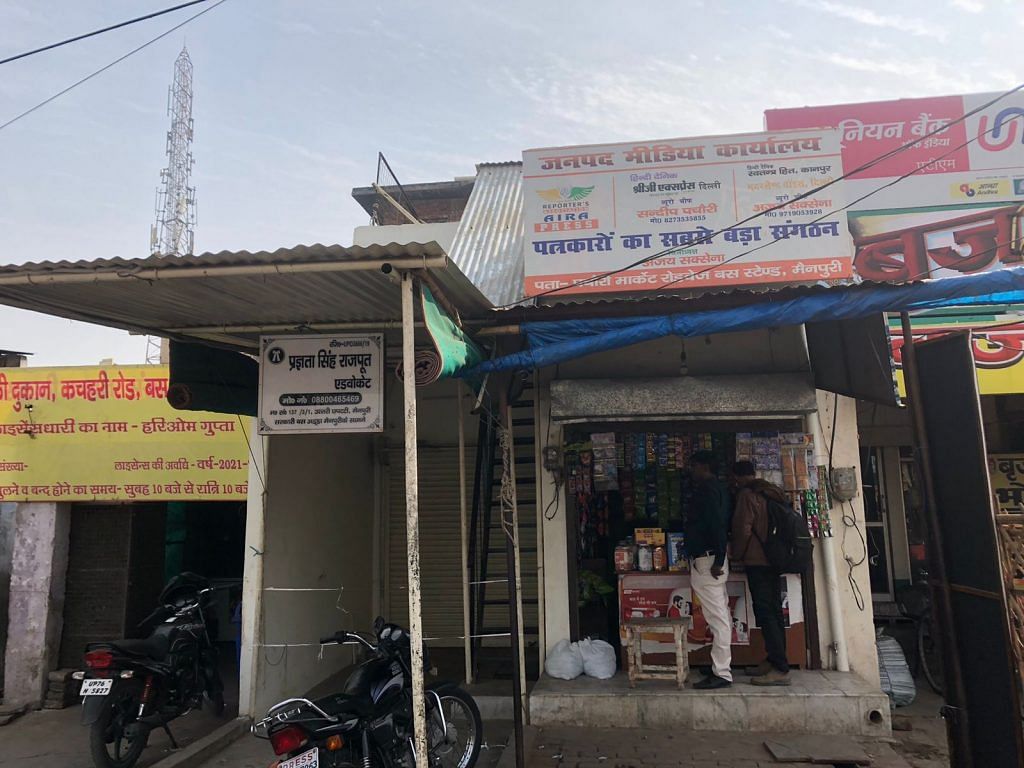
Also read: More Indian journalists prefer to tweet than go on the field to report — it suits the govt
Awaiting their big byline
Most of the stringers we talked to don’t remember the big story of their lives.
“One of my social stories about a house on illegal land went viral on an app. I think that was the biggest story,” Patel from Prayagraj says.
Back in the Mainpuri group, none among the 15 stringers thought their big story has been published yet.
“During the second wave, district reporters did not step outside. We all relied on Shanker’s footage from Covid wards and crematoriums,” Azad says. Most acclaimed district reporters send their dispatches based on the footage from stringers like Shanker Sriwastava. Yet, they don’t get entry passes to cover big or VIP events because they are not registered.
Rohit Sanwal, an editor with ABP Ganga, highlighted the role of a stringer in news.
“Stringer news channel ki ek zaroori kadi hoti hai (stringers are important links for news channels),” he says. “But they are not salaried employees, they are paid per story.”
Elections are when stringers are truly noticed. They sniff out the real story and direction of the wind.
“During elections, they need a letter from the district election officer to cover poll/counting. That is when the media houses send a list of stringers. The only time they are listed somewhere is election time,” says Pulkit Khare, District Magistrate of Pilibhit. He adds that only bureau chiefs and big reporters get access to the district administration.
Diary of a stringer
Shanker Sriwastava’s wife passed away a decade ago. Two of his daughters are married now. His sons work as technicians. When he joined this field of work, he had to buy a Panasonic camera for Rs 22,000. He would report as well as do wedding photography for financial support. Now, the camera is of no use to him in a digital world. His elder son has given his Redmi smartphone to Sriwastava so he can carry on.
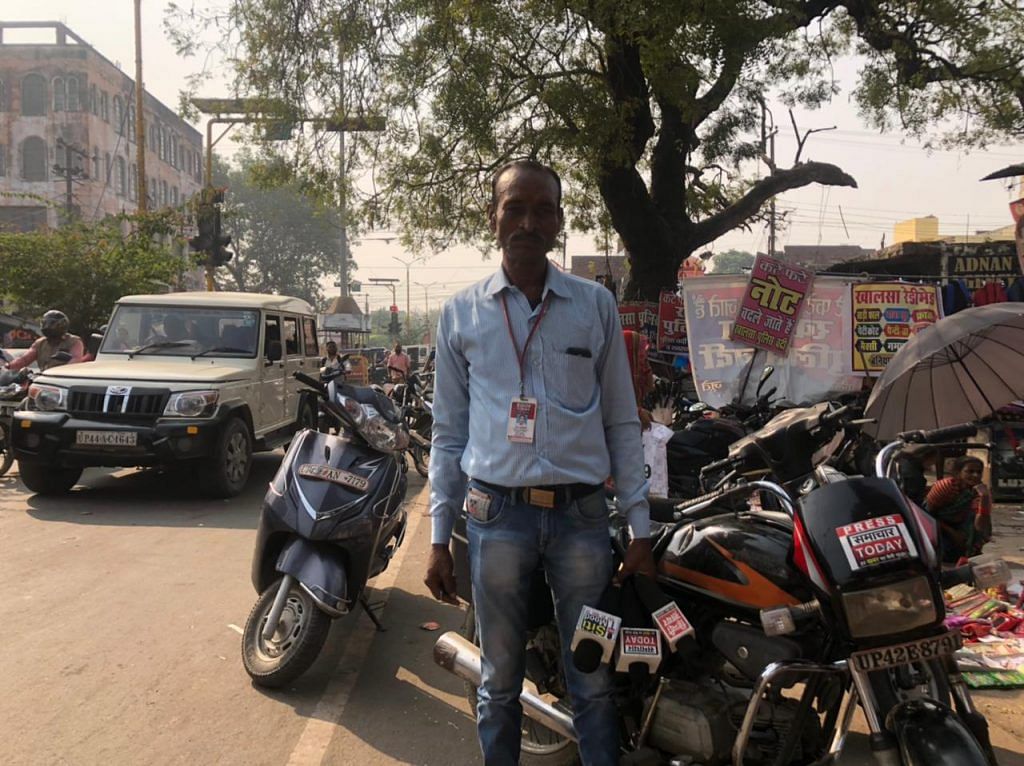
Sriwastava’s days are mostly spent recording footage and forwarding it to every district journalists’ group. He leaves for the field around 10 am and returns home late evening.
“Lagaav hai to kar rahe hain. Corona ke dauran bhi hum har ward mein gaye, har shamshan mein gaye (We are attached to the profession, so we are doing it. During coronavirus pandemic, we went to each ward and crematorium),” he says.
Pawan Patel’s 26-year-old wife Meenu Patel finds it difficult to manage everything on her own.
“We have a two-year-old daughter. Sometimes, he is out for two days, and I wonder if he has had food or not. But it feels nice when people refer to me as ‘Reporter ki wife’ and ask for favours. We as a family don’t ask for anything extra because my husband does not get paid for that,” she says.
Like Nawazuddin Siddique’s character Rajesh in Peepli Live, most small-town stringers are still waiting for their big break, even as many call them the real journalists of India.
(Edited by Neera Majumdar)



